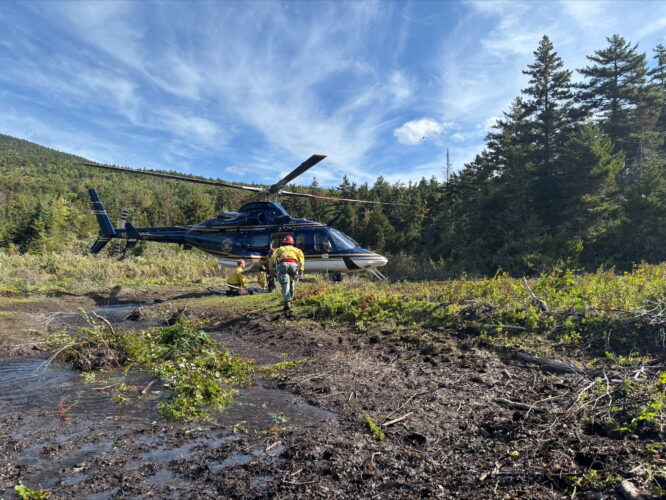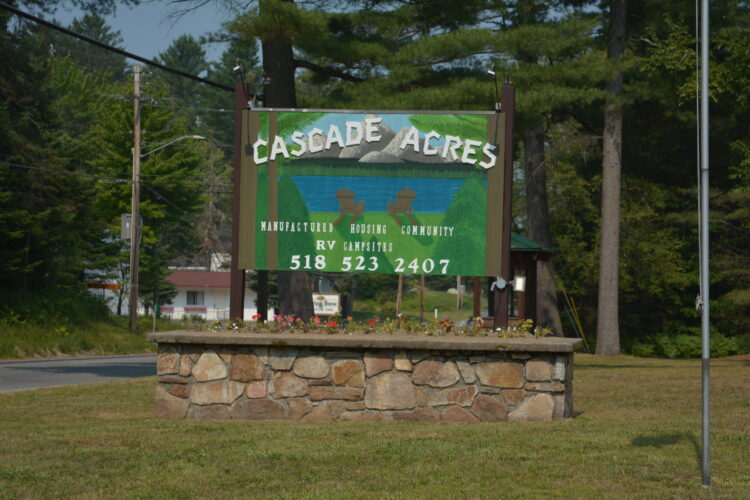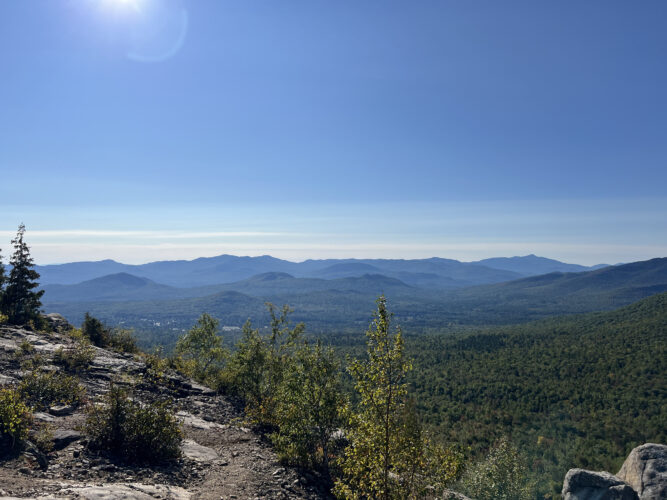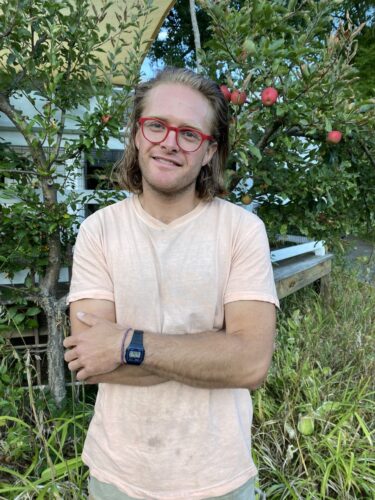Keene Valley oral history project aims to catch lost stories
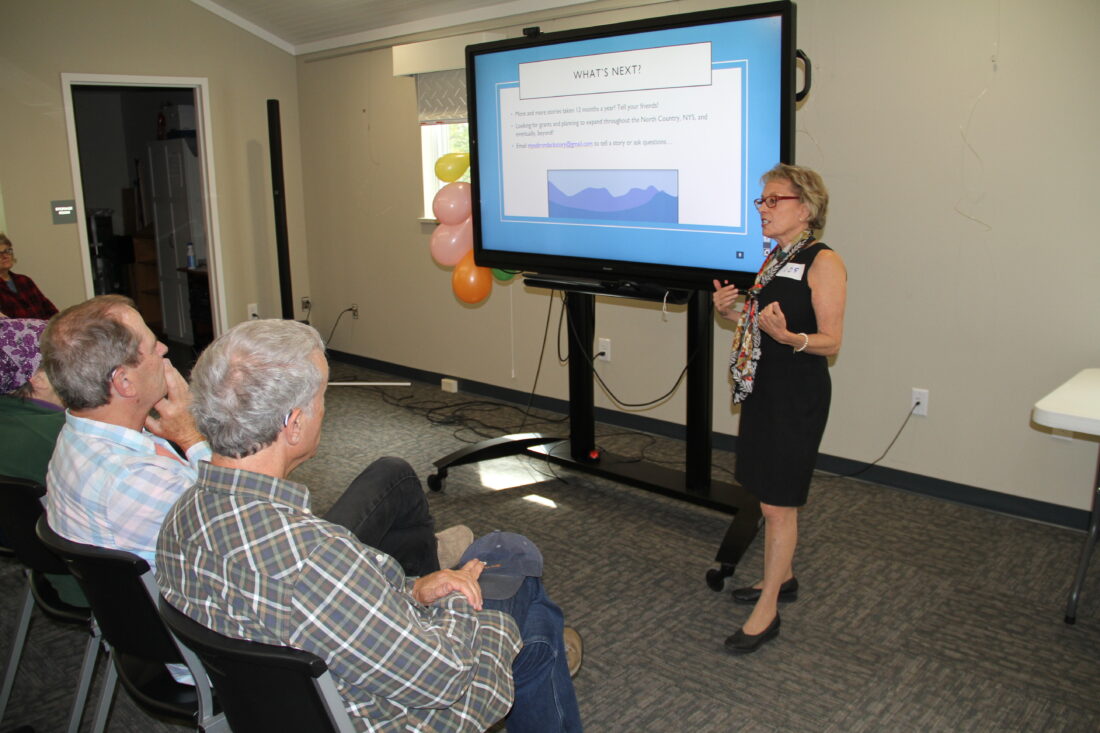
Jery Huntley gives a presentation about the Keene Valley Library’s Adirondack Community oral history project in September 2019. (News photo — Andy Flynn)
KEENE VALLEY — Charity Marlatt loves to tell the story of her father, Alan Washbond, a Keene Valley native who competed in the 1936 Olympic Winter Games in Garmisch-Partenkirchen, Germany. At the time, Adolf Hitler was in power in Germany and many people questioned whether American athletes should even go to the games. American athletes decided to go, but not without making their principles known during the parade of nations.
“All of the participants from the U.S. were determined that the flag would not be dipped in honor of this tyrant, Adolf Hitler,” Marlatt said. “My dad would tell with great pride that that never happened, they never dipped their flag and they never looked his way, either.”
During those games, Washbond and his partner, Ivan Brown, won gold with the two-man sled they had built in Washbond’s garage.
This story was the first one recorded by Jery Huntley as a part of the My Adirondack Story oral history project. For Marlatt, it was a chance to relive the special Olympic experience that was relayed around her dinner table growing up. When Huntley told her that hers was the first story, Marlatt started to cry.
“It brought out every bit of emotion in my body,” she said, “It was a joy, an absolute joy, to be able to reconnect with that wonderful happening.”
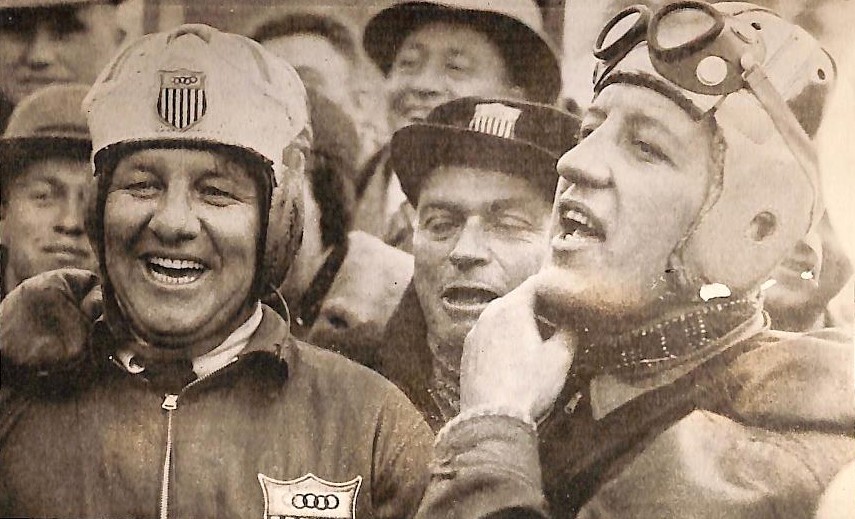
U.S. bobsledders Alan Washbond and Ivan Brown at the 1936 Olympics. (Provided photo — Keene Valley Library)
Now living in California, the oral history project is one thing that keeps Marlatt connected to her home, which she misses enormously.
“It has been a beautiful addition to our community,” she said. “If you don’t tell these stories, they just go into oblivion.”
Since 2019, Huntley’s mission has been to keep as many stories as possible from slipping into oblivion. Enter the My Adirondack Story project, and the broader OurStoryBridge organization that has helped plant similar oral history projects around the country.
Huntley herself has been coming to the Adirondacks regularly for decades, but when she eventually bought a house in Keene Valley about 12 years ago, she immediately grativated to the library. After a long career in both New York and Washington, D.C., she returned to her roots as a teacher and librarian.
My Adirondack Story grew out of her work at the library. She started collecting stories on a platform called Memria, which is intuitive to use and converts audio and a collection of photos into a short video that’s easy to embed on a website. The ease and accessibility of both collecting and listening to the stories has transformed the Adirondack Community project into a powerful learning tool and a model that has now been replicated around the country.
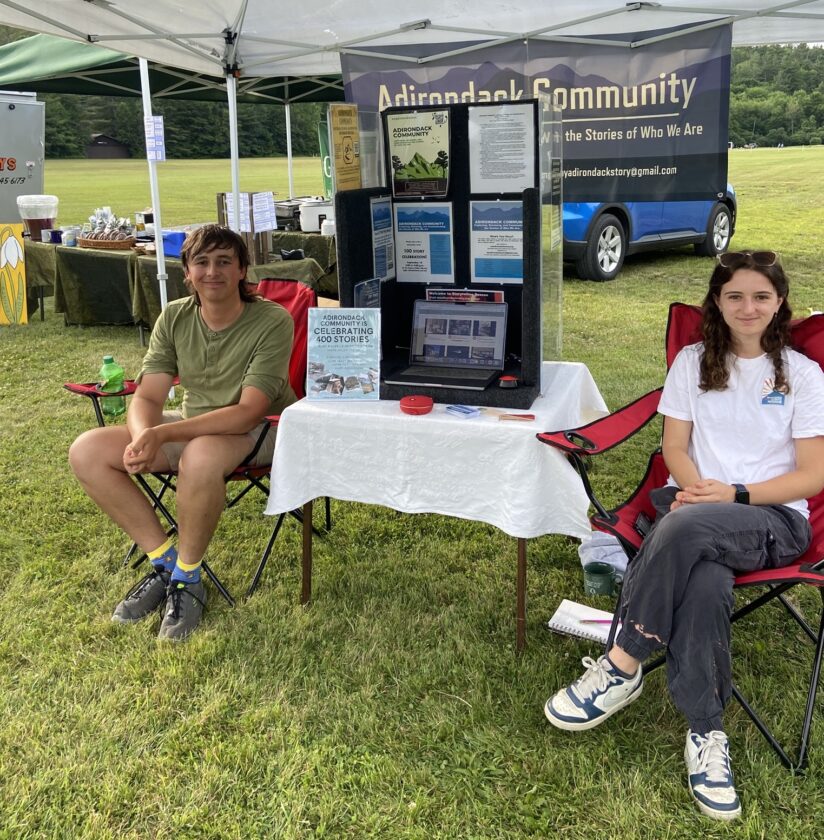
Adirondack Community volunteers Cal Page-Bryant and Zarela Gulli at the Keene Day booth on July 5. (Provided photo — Keene Valley Library)
Now, more than 10,000 people have listened to the stories of a town of 1,100 residents. As a result of Huntley’s work to train and provide resources to museums, libraries and other organizations, 42 similar oral history projects now exist in 16 states. To listen to these stories, visit myadirondackstory.org and ourstorybridge.org.
–
Finding funding
–
Our Story Bridge, and the affiliated projects that fall under its umbrella, has been sustained by small grants from mostly local organizations like the Adirondack Community Foundation, Cloudsplitter Foundation and the Essex County Arts Council, among others. But really, it lives because Huntley — now retired — works 40 to 50 hours per week as an unpaid volunteer.
The goal, Huntley said, would be to obtain enough funding to hire an executive director to take over her role. In order to do this, they worked towards getting federal grants. Four agencies — the National Endowment for the Humanities, the National Endowment for the Arts, the Institute for Museum and Library Service and the National Park Service — were all possible options to get into the federal funding pipeline.
In March, this door seemed to have opened to OurStoryBridge when the organization received its first direct federal grant of $35,000 from the NEH. The purpose of the grant was to research and create a strategic plan for using the stories in public educational programming, including in schools.
Three weeks later, that grant was rescinded.
“NEH has reasonable cause to terminate your grant in light of the fact that the NEH is repurposing its funding allocations in a new direction in furtherance of the President’s agenda,” the letter said. “Your grant’s immediate termination is necessary to safeguard the interests of the federal government, including its fiscal priorities.”
Huntley muses about what the possible reasons could have been for taking away the money.
“It was dangerous to the goals of the Trump administration, pulling teachers together to talk about how they could use stories in classrooms,” she said.
The four agencies have all been targeted for reduction or even elimination by the Trump administration, so Huntley said their prospects of larger grants have evaporated. She and her volunteers can keep doing what they have been doing, but dreams for future growth are much less certain.
–
Knowing their neighbors
–
Monique Weston spent her childhood summers in Keene, in a house with no electricity, reading by the light of an Aladdin kerosene lamp and connected to the world by only a crank phone. She finds the story project to be a fascinating look into the past, including parts of her childhood.
Weston, who is part of numerous interest-related groups in Keene, from writing groups to environmental groups, said Keene already has a remarkable sense of community, but this project enhances it.
“People get engaged in volunteering,” she said, describing what makes Keene special. “People create things to share.”
The benefit of knowing about the community is extended to young people in the community, including through the many resources Huntley and her volunteers share with Keene Central School.
Brad Hurlburt, a social studies teacher at KCS, is one of the teachers who incorporates the stories into his classes.
He has used them to both supplement his curriculum — such as drawing World War II stories from the region — and to teach students to “take inventory” of their own lives by recording their own stories.
“It makes the learning tangible and less abstract,” Hurlburt said. “It connects it to where they directly live and makes it, in some ways, more real.”
Marlatt is effusive in her gratitude for Huntley and the oral history projects. She said there are so many stories she wouldn’t have otherwise known about the community.
“It helps to bring a community together, when people share stories,” she said. “You suddenly have a camaraderie that never existed before, which is very significant, especially in a small town.
Peter Slocum, a retired reporter living in Keene, traces his interest in history to the newspaper business. His very first job was delivering papers, and throughout his career, he was interested in how individual, ordinary people shape the path of history. Slocum said oral history projects are the perfect vehicle to capture these stories, whether they be the last ranger who supervised the Hurricane Mountain fire tower, or a man who had to sleep with a frozen turkey in his sleeping bag to thaw it out for Christmas dinner.
“An important feature of the Community Story project is that it focuses on regular people, not kings and princes and generals,” he said. “Oral history reaches everyday people much more than history books do, and it gives us a sense of what life is, and was, like.”
This kind of public record used to be the territory of the dozen newspapers in the Adirondacks. But as tastes and technology have changed — and newspapers have shuttered — other means are needed. In all of Slocum’s historical pursuits, including with the Keene Historical Society and the Adirondack History Museum in Elizabethtown, what interests him most is the struggle of previous generations who found ways to survive the sometimes-harsh conditions of the High Peaks.
“You can see the relationship between the environment and how we make our way, in a direct way,” Slocum said, “which is so far removed from the more urban, suburban life that most people in the United States live.”
But the study of the past isn’t just for the sake of looking back, he said.
“How do the stories of our past affect thinking about the future?” he added. “You can try to look at history as an active part, not a dead letter.”

